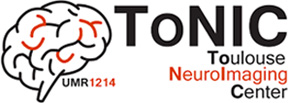Recherche translationnelle en santé,
technologie pour la santé et recherche clinique

DETERMIND (in the making) / Axis 3. Predicting response to treatment and determining therapeutic strategy
Personalised medicine is based on the concept of tailoring treatment to individual patient characteristics. The analysis of cognitive-behavioural, motor, genetic and neuroinflammatory signatures is therefore being used specifically to predict response to treatment and the occurrence of adverse effects. For example, we have shown the clinical and cognitive heterogeneity of PET neuroinflammatory profiles in the early phase of Alzheimer’s disease (Gouilly et al., 2024). In patients with autoimmune encephalitis, the MINUTIAE study aims to identify surrogate biomarkers of neuroinflammation based on 18F-DPA-714 PET imaging, proteomics and longitudinal clinical data. Using an approach that combines artificial intelligence and repeated longitudinal monitoring, this project will enable better prediction of the inflammatory activity of the disease in order to individualise the adjustment of immunosuppressive treatment during patient follow-up. In the area of neurodevelopmental disorders, the MODAH project aims to identify the neuropsychological and electrophysiological signatures of ADHD and to predict the response to treatment with methylphenidate (MPH). An explicit computational model of dopamine and noradrenaline deficits will be developed to make predictions about the dysregulation of these neurotransmitters and the neural oscillatory mechanisms underlying the attentional and inhibitory processes identified in ADHD. Once the model has been validated in healthy subjects and then in ADHD patients, the model’s individual predictions of treatment efficacy will be compared with objective data obtained after 4 weeks of MPH, assessed by the patient’s feelings, impact on daily life, and cognitive and electrophysiological changes. Future DeterMIND projects in this area will strengthen the second component, ‘therapeutic decision strategy’, by investigating the relationship between response intensity and the identified markers. The development of decision trees based on these markers to facilitate patient management and guidance towards different treatments could be envisaged as an outcome of these projects.
